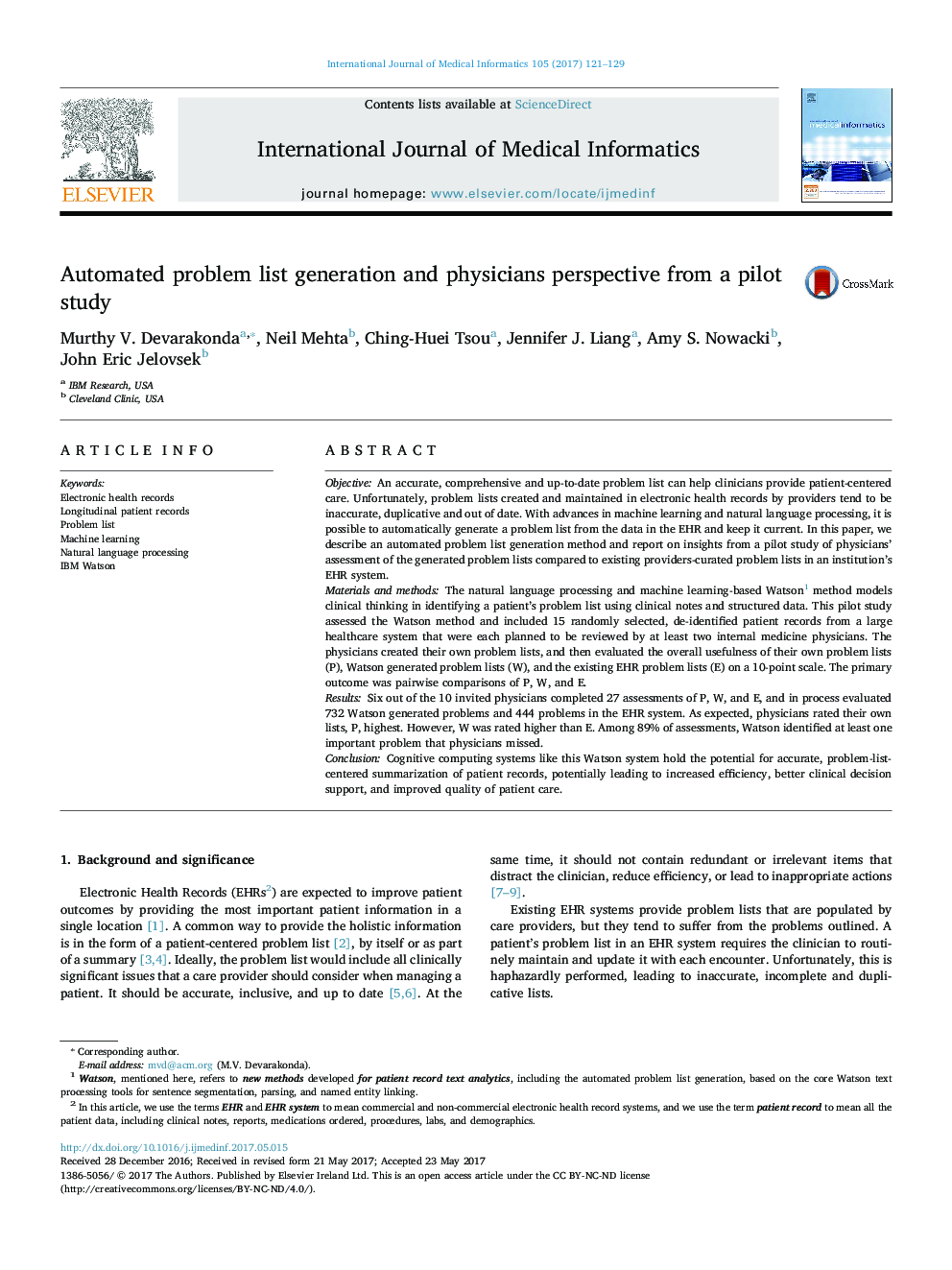| Article ID | Journal | Published Year | Pages | File Type |
|---|---|---|---|---|
| 4966565 | International Journal of Medical Informatics | 2017 | 9 Pages |
ObjectiveAn accurate, comprehensive and up-to-date problem list can help clinicians provide patient-centered care. Unfortunately, problem lists created and maintained in electronic health records by providers tend to be inaccurate, duplicative and out of date. With advances in machine learning and natural language processing, it is possible to automatically generate a problem list from the data in the EHR and keep it current. In this paper, we describe an automated problem list generation method and report on insights from a pilot study of physicians' assessment of the generated problem lists compared to existing providers-curated problem lists in an institution's EHR system.Materials and methodsThe natural language processing and machine learning-based Watson1 method models clinical thinking in identifying a patient's problem list using clinical notes and structured data. This pilot study assessed the Watson method and included 15 randomly selected, de-identified patient records from a large healthcare system that were each planned to be reviewed by at least two internal medicine physicians. The physicians created their own problem lists, and then evaluated the overall usefulness of their own problem lists (P), Watson generated problem lists (W), and the existing EHR problem lists (E) on a 10-point scale. The primary outcome was pairwise comparisons of P, W, and E.ResultsSix out of the 10 invited physicians completed 27 assessments of P, W, and E, and in process evaluated 732 Watson generated problems and 444 problems in the EHR system. As expected, physicians rated their own lists, P, highest. However, W was rated higher than E. Among 89% of assessments, Watson identified at least one important problem that physicians missed.ConclusionCognitive computing systems like this Watson system hold the potential for accurate, problem-list-centered summarization of patient records, potentially leading to increased efficiency, better clinical decision support, and improved quality of patient care.
